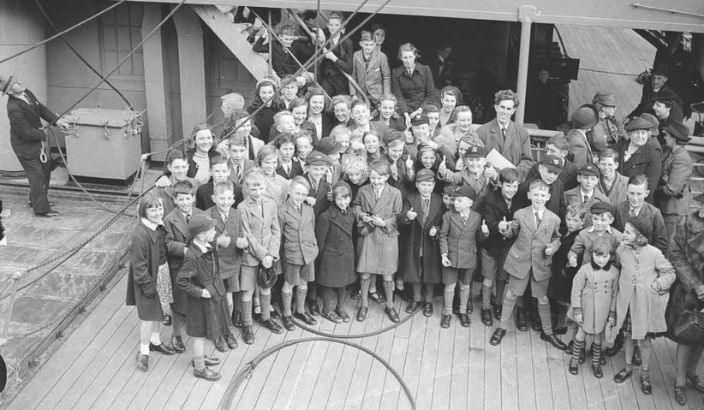Saving the children of England


British children on the Rangitata. Photo: Supplied.
Wendy Simonsen - Archives Manager, Marlborough Museum
During the Second World War, over one and a half million children in England were evacuated to the countryside to escape the German bombing raids. In the summer of 1940, the British Government sponsored a new scheme, called the Children’s Overseas Reception Board (C.O.R.B.)
Under this new scheme parents could apply to have their children transported to safer countries such as Australia, Canada, South Africa and New Zealand. When the C.O.R.B. opened, over 200,000 parents applied for the limited number of spaces.
On the 29th of August 1940, the passenger ship Rangitata, in convoy with the ship Volendam, which was bound for Canada, transported 113 child evacuees from Liverpool to Wellington. Early in this voyage the Volendam was torpedoed, the passengers and crew abandoned ship, but thankfully all 321 children were rescued by the convoy and taken to Greenock and other west coast ports in Scotland.
By the end of September 1940 New Zealand had taken in some 202 children. New Zealand local authorities invited applications for the “Sea-Evacuees”, as they were called, and 113 of these were received from Marlborough families. One such family were Walter and Katie Millard, a farming couple from Riverlands. They requested a boy between 6 and 9 years old and they guaranteed a good home and every care to the evacuee.
Another family, Mr & Mrs Cox, farmers from Murphy’s Road, requested to accommodate their two nephews, who were living in Portsmouth at the time.
Many areas and professions of Marlborough were represented among the host families - a lighthouse keeper from Cape Campbell, a high-country musterer, mining supervisor, school master/teachers, bushmen, labourers, farmers, widows, butchers and bakers.

After the fatal sinking of the City of Benares, where only 13 of the 90 children survived, the risk had become too great and the British Government cancelled the scheme. Private evacuations, however, continued well into 1941.
Although it is not known which of the children were actually billeted in Marlborough during the war, these 113 families were willing to open their homes and hearts to the “Sea-Evacuees” from far away.
